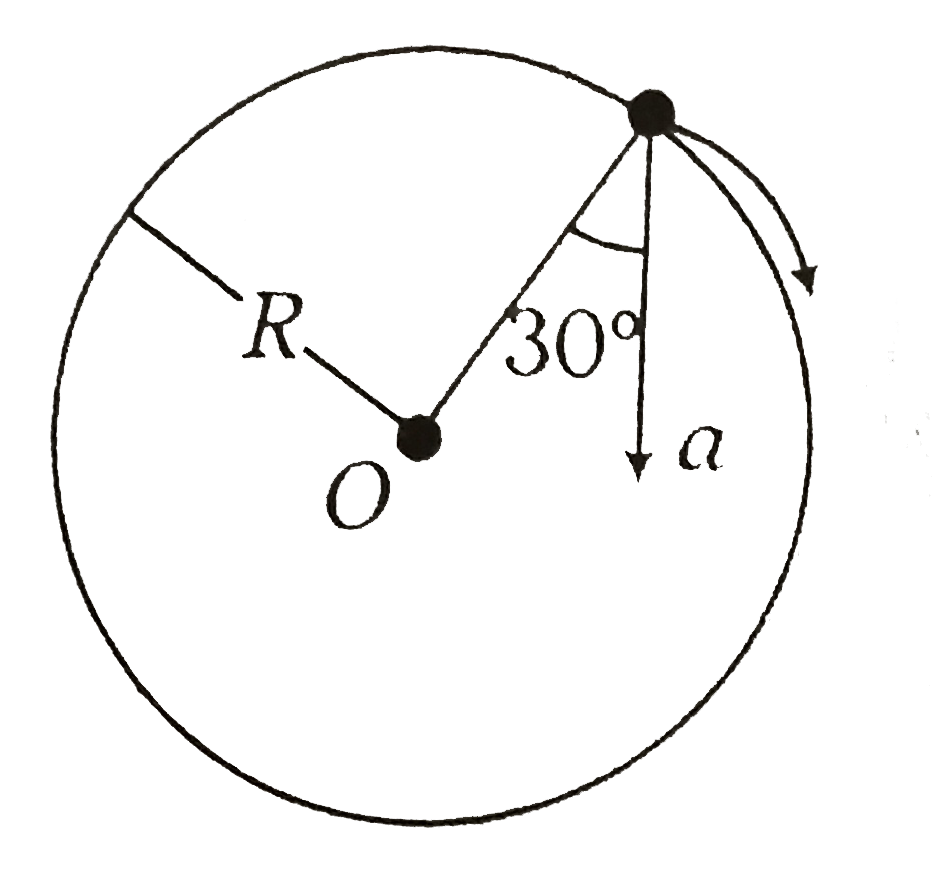The acceleration of an athlete running at 36 kmph when negotiating a turn of radius 25 m is
Here, v=10 ms–1,r=25m
The acceleration of the sprinter is given by a=v2r=10025=4.0 ms2
Similar Questions
The acceleration of an athlete running at 36 kmph when negotiating a turn of radius 25 m is
View SolutionFigure shows the total acceleration and velocity of a particle moving clockwise in a circle of radius 2.5 m at a given instant of time. At this instant, Find: (i) the radial acceleration, (ii) the speed of the particle and (iii) its tangential acceleration.

View Solution
Knowledge Check
The acceleration of an athlete running at 36 kmph when neotiating a turn of radius 25 m is
A1m/s2B2m/s2C4m/s2D8m/s2In the given figure, a=15m/s2 represents the total acceleration of a particle moving in the clockwise dirction in a circle of radius R=2.5m at a given instant of time. The speed of the particle is
 A5.7m/sB6.2m/sC4.5m/sD5.0m/s
A5.7m/sB6.2m/sC4.5m/sD5.0m/sA superfast Duronto express running at 90 kmph overtakes a bike running at 36 kmph in 25 seconds . What is the length of the train in meters ?
A375 mB225 mC275 mD325 m
Calculate the magnitude of linear acceleration of a particle moving in a circle of radius 0.5 m at the instant when its angular velocity is 2.5 rad s–1 and its angular acceleration is 6rads−2.
View SolutionA road is banked at an angle of 30∘ to the horizontal for negotiating a curve of radius 10√3 m. At what velocity will a car experience no friction while negotiating the curve? Take g=10ms−2
View SolutionThe centripetal force required by a 1000 kg car that takes a turn of radius 50 m at a speed of 36 kmph is
View SolutionA car moves at speed of 36 km hr−1on a level road. The coefficient of friction between the tyres and the road is 0.8 . The car negotiates a curve of radius R. IF g=10 ms−2, then the car will skid (or slip) while negotiating the curve if the value R is
View SolutionThe centripetal force required by a 1000 kg car that takes a turn of radius 50m at a speed of 36kmph is .
View Solution
